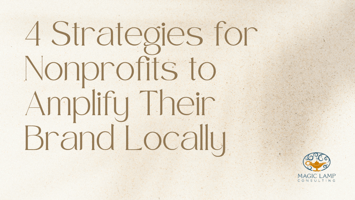Nonprofits exist to meet real needs—but those needs evolve. What worked five years ago may not...
Why a Community Needs Assessment is Imperative to Nonprofits

A Community Needs Assessment (CNA) is a systematic process of gathering and analyzing data about the gaps in a community. This information can then be used to develop and prioritize programs and services that address those needs. For nonprofits, a CNA can be an invaluable tool for understanding the needs of the people they serve and for ensuring that their programs and services will be sustainable and have a positive impact.
Benefits of a Community Needs Assessment
A Community Needs Assessment is a comprehensive evaluation process that offers numerous benefits, including the ability to identify and address gaps in services, allocate resources more effectively, and tailor programs to better meet community needs. By engaging with community members and stakeholders, a CNA fosters stronger relationships and builds trust, ensuring that initiatives are community-driven and aligned with actual needs. Additionally, the insights gained from a CNA can enhance strategic planning, support grant applications, and ultimately lead to more impactful and sustainable outcomes for the community.
Some other key benefits include:
- Identifying unmet needs: A needs assessment can help nonprofits identify gaps in services and areas where there is a need for new or expanded programs.
- Prioritizing programs and services: A needs assessment can help nonprofits prioritize their programs and services based on the most pressing needs of the community.
- Evaluating the effectiveness of programs and services: A needs assessment can help nonprofits evaluate the effectiveness of their programs and services by tracking changes in the needs of the community over time.
- Building community relationships: A needs assessment can help nonprofits build relationships with other organizations and agencies in the community, which can lead to collaboration and partnerships.
- Securing funding: A needs assessment can help nonprofits secure funding from donors and foundations by demonstrating the need for their programs and services.
How to Conduct a Community Needs Assessment
Conducting a Community Needs Assessment involves a systematic and thorough exploration of the needs, assets, and challenges within a community. It typically begins with gathering demographic data, conducting surveys, interviews, and focus groups with community members, stakeholders, and experts. This process allows organizations to gather qualitative and quantitative information that is essential for understanding the community's priorities, identifying underserved populations, and pinpointing areas where interventions or improvements are most needed. A well-executed CNA not only provides a clear picture of the community's current state but also helps in developing evidence-based strategies and programs that can make a meaningful impact and foster long-term positive change.
There are a number of different ways to conduct a CNA. Some common methods include:
- Surveys: Surveys can be used to collect data from many people quickly and easily.
- Focus groups: Focus groups can be used to gather in-depth information from a small group of people.
- Interviews: Interviews can be used to collect data from key informants, such as community leaders and service providers.
- Document review: Document review can be used to gather data from existing sources, such as census data and reports.
Using the Results of a Community Needs Assessment
The results of CNA serve as a foundation for informed decision-making and targeted action by organizations and stakeholders. For instance, if the assessment reveals a significant lack of affordable housing options in a community, local nonprofits and government agencies can use this information to advocate for policy changes, secure funding for housing projects, or develop initiatives to provide housing support services. Similarly, if the assessment identifies a high prevalence of food insecurity among certain demographics, food banks and community organizations can tailor their outreach efforts to better meet nutritional needs through targeted distribution programs or educational campaigns. Moreover, healthcare providers can utilize CNA findings to establish clinics or outreach programs in underserved areas, ensuring that medical services are accessible where they are most needed. By strategically applying the insights gained from a CNA, organizations can effectively address community needs and enhance the overall well-being of residents.
Conclusion
A community needs assessment is an essential tool for nonprofits that want to understand the needs of the people they serve and to ensure that their programs and services are having a positive impact. By conducting a needs assessment, nonprofits can identify gaps in services, prioritize their programs and services, evaluate the effectiveness of their programs and services, build community relationships, and secure funding.
Does your nonprofit need assistance in conducting a Community Needs Assessment? We encourage you to reach out the Magic Lamp Consulting team. Where we can put our decades of nonprofit experience to work for you! Schedule a free consultation today to get started.



